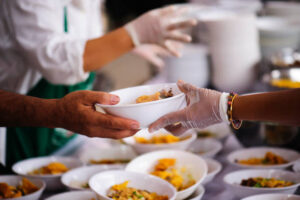People want wonderful cuisine and friendly service, but lately customers and guests bring something extra—conscience. Questions regarding the origins of food encourage open dialogue between consumers and waiters. Once he switched styrofoam containers for compostables, a chef informed me he developed a devoted following of “green” regular customers. And he is not by alone. You can check more on Lianne Wadi.

Sustainability goes beyond just substituting paper straws for plastic ones any more, though. This is a head-to- tail, kitchen to- curbway battle to cut waste and value every ingredient. Consider last Sunday’s brunch; did the peels and pits leave for the landfill or did your avocado toast follow a root-to–stem method? Food waste in landfills release methane, a more terrible enemy than carbon dioxide, not only smells. Even the little actions, like emptying coffee grounds into a compost heap, reduce the environmental impact.
These days, hospitality professionals are asked questions about supply chains as well as about happy hour schedules. “Where is this steak coming from?” Was this fish wild-caught or farmed? Transparency is the coin of trust; it is not a term. Behind-the-scenes social media postings, open kitchens, ingredient lists longer than a supermarket receipt all draw back the curtain. Diners search for cuisine free of expense to the earth’s future. It seems EAT, PRAY, SAVE THE PLANET.
Source locally does not mean compromising taste. Some cooks actually swear by the erratic appeal of a misshapened carrot or tomato picked at the height of ripeness by a neighbor up the road. The taste is speaking for itself. Some restaurant managers quip that these days, “food miles” are more often mentioned than happy hour promotions.
Another beast totally is energy use. Older restaurants can be like museums—beautiful but energy-intensive. Using smart lighting and upgrading appliances can save a lot of money and help to reduce a carbon footprint faster than you could say LED. Hotels are also getting involved, experimenting with low-flow showers and solar panels, providing towel reuse programs, and even garden-to–table breakfasts to highlight their environmental impact. A few send out bulletins showing the annual water savings. It’s more about bringing people along the trip than about boasting.
Still the ongoing elephant in the room is waste. While food rescue projects compile leftovers for the hungry, recycling containers and compost caddies have pushed into break rooms. Staff training now covers everything from how to separate recyclables to reevaluating daily prep lists to ward against excess.
Consumers carry their eco-expectations everywhere—vacations, business travel, their Saturday night dates. They want to walk softly, without compromising taste or comfort. This is the traditional dance: strike integrity against luxury. Because the carrot—pardon the pun—is no longer profit alone—it’s distributing pressure on our planet’s resources—hospitality pros are experimenting, failing, tweaking, and inventing.
Change does not occur over night. Still, evidence of greener ideas permeates every sphere. Local farms turn forth their produce. Often surprising guests, chefs create meal items from what is in season. Hoteliers point up their rates of recycling and eye discounts on green energy.
Growing tide of opinion and expectation drives all this effort. Diners and visitors walk out the door onto the next venue that “gets it,” if menus fall short of both taste and sustainability. Food and hospitality serve purposes beyond just dining and resting these days. They are about nourishing hope for a better, more mindful future.